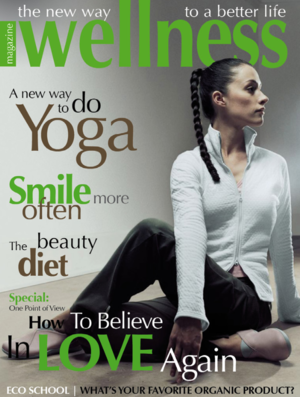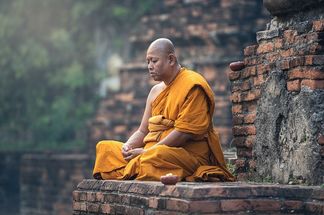Article
Help your body be healthy again {Part 3 - Antioxidants} The color of health
Everyone has heard about antioxidants, but what do they really do and why are they good for us? They’re substances in food, which prevent damage to your body’s cells and tissues caused by free radicals. Antioxidants are made in the body, but we also get them from our food. They act like little protectors for our cells that neutralize free radicals roaming around in the body. If the body doesn’t get enough antioxidants to mop up the free radicals, many health issues can occur such as arthritis, allergies, inflammation, aging skin, fatigue, and even cancer.
Free radicals are highly reactive molecules capable of damaging cells and tissue, antioxidants fight against free radicals continually--since free radicals are continually formed in the body. It is hard to prevent free radicals from forming in our bodies, but we can reduce their destructive power by eating foods with plenty of antioxidants.
How do we get more antioxidants?
Antioxidants are present in foods as vitamins, minerals, carotenoids, and polyphenols, among others. Antioxidant-rich foods include, fruits, vegetables, black and green tea, and chocolate.
Many antioxidants are often identified in food by their distinctive colors— the blue-purple of blueberries, blackberries, and grapes, the deep red of cherries and of tomatoes; the orange of carrots; the yellow of corn or mangos. The most well known components of food with antioxidant activities are vitamins A, C, and E; β-carotene; the mineral selenium; and more recently, the compound lycopene.
Did you know?
Coffee and tea, whether black or green, caffeinated or decaffeinated (herbal teas don’t count), has spectacular antioxidant capabilities owing to large amounts of substances called flavonoids. In addition to preventing oxidation, flavonoids may have an anticlotting effect.
Like tea, dark chocolate contains flavonoids, which are compounds that act as antioxidants. Flavonoids protect cells from harmful molecules—called free radicals—that are produced when the body breaks down food or is exposed to sunlight or smoke.
What are the different types of antioxidants?
There are many different types of antioxidants. Enzymes can be antioxidants, vitamins can be antioxidants and phytonutrients such as carotenoids can be antioxidants to name just a few. Ever heard of “beta carotene?” How about “lutein” or “lycopene?” These are some of the better-known antioxidants from the family of compounds called “ carotenoids.”
Ever hear of Astaxanthin? Probably not, but scientific research shows that this carotenoid is much more potent as an antioxidant and has many more specific benefits for human nutrition than beta-carotene, lutein or lycopene. In fact, Natural Astaxanthin is the strongest natural antioxidant that science has found yet. Astaxanthin belong to a class of naturally occurring pigments called carotenoids, which have powerful antioxidant properties that are crucial for your health. Carotenoids are the compounds in your foods that give them that vibrant cornucopia of color, from green grasses to red beets, to the spectacular yellows and oranges of your bell peppers.
Did you know?
Natural Astaxanthin has been consumed in the diet for as long as humans have eaten anything red or pink from the sea. For example, the equivalent amount of one 4 mg capsule of Natural Astaxanthin can be found in a four once (100gram) serving of sockeye salmon. The salmon species that has by far the highest Astaxanthin concentration.
Foods of the following three colors generally contain high amounts of antioxidants (see examples)
- Dark blue (blueberries, grapes, blackberries, pomegranate, prunes, acai)
- Deep red (cherries,tomatoes, strawberries, raspberries, red peppers, goji)
- Dark green (kale, spinach, broccoli)
How do we get enough of them in our foods?
Basically, eating a ton of fruits and vegetables (at least nine 1/2 cup servings daily) is going to help protect your cells from free radical damage.
Antioxidants are the best, when taken with an assortment of other antioxidants.
Antioxidants work together and can actually be synergic: Two or three antioxidants can have a combined effect grater then sum of the individual antioxidants. Here is where eating a varied diet with a minimum nine servings of fruits and vegetables comes into play. You also can take a concentrated supplement in pill form that has a very high level of antioxidant activity.
Did you know?
Astaxanthin is now thought to be the most powerful antioxidant found in nature.
Astaxanthin not only provides the color to salmon but is also the reason salmon having the strength and endurance to swim up rivers and waterfalls for days on end. Their diets are high in this pigment, which concentrates in their muscles and makes them one of the "kings of endurance" of the animal kingdom.
Astaxanthin is leaps and bounds more powerful than beta-carotene, lycopene and lutein, other members of its chemical family. It exhibits VERY STRONG free radical scavenging activity and protects your cells, organs and body tissues from oxidative damage.
Astaxanthin's unique "antioxidative artillery" provides for an impressive array of health benefits, including improving cardiovascular health, stabilizing blood sugar, boosting your immune system, fighting cancer, improving endurance and athletic performance, improving fertility—and even protecting you from sunburn.
Why should Astaxanthin matter to you?
Astaxanthin was featured on the Dr. Oz Show as “The #1 Supplement you’ve never heard of that you should be taking.”
- Helps reduce aches and pains from arthritis and joint soreness
- Gives energy, increase strength and improve endurance
- Improves the body’s immune system
- Supports cardiovascular health and normal cholesterol levels
- Improves the skin as an “internal beauty supplement”
- Protects the eyes and brain form damaging free radicals and oxidation
- Controls deadly “silent inflammation”, a cause of heart disease and cancer
For more information please go to www.nutrex-hawaii.com/bioastin
References:
Bob Capelli with Gerald R. Cysewski, PHD “ Astaxanthin “ Natural Astaxanthin: King of the Carotenoids.
THIS INFORMATION IS NOT INTENDED FOR USE AS, AND SHOULD NOT BE CONSTRUED AS, MEDICAL ADVICE. YOU SHOULD ALWAYS CONSULT WITH A PHYSICIAN OR QUALIFIED HEALTH CARE PROFESSIONAL FOR MEDICAL ADVICE AND HEALTH RECOMMENDATIONS. DO NOT DISREGARD, AVOID, OR DELAY SEEKING MEDICAL ADVICE BECAUSE OF SOMETHING YOU MAY HAVE READ ON THIS SITE.
Share article








You must be logged in to add a comment ... → Log in | Register